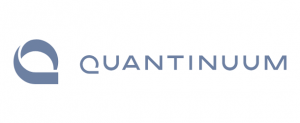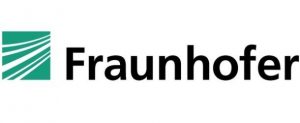Quantum News Briefs February 24: WEF: How quantum technology could revolutionize Africa’s health, agriculture and finance sectors; Quantinuum sets industry record for hardware performance with new quantum volume milestone; Fraunhofer Tech’s partners prepare quantum computing for industrial use developing deep freeze electronics for supercomputers + MORE

Quantum News Briefs February 24: WEF: How quantum technology could revolutionize Africa’s health, agriculture and finance sectors; Quantinuum sets industry record for hardware performance with new quantum volume milestone; Fraunhofer Tech’s partners prepare quantum computing for industrial use developing deep freeze electronics for supercomputers + MORE
WEF: How quantum technology could revolutionize Africa’s health, agriculture and finance sectors

The World Economic Forum (WEF) has released an assessment of the impact of quantum technology in Africa, Those findings should accelerate progress across healthcare, finance and agriculture, bringing about meaningful societal advancement. Quantum News Briefs summarizes below.
One of the most promising applications of quantum technology in Africa is in the field of healthcare.The key potential use cases for quantum computing in the healthcare industry include diagnostic assistance, precision medicine, accelerated drug discovery and pricing optimization.Quantum-enhanced diagnostic assistance could help diagnose patients early, accurately and efficiently. Precision medicine could allow more personalised interventions and treatments. Accelerated drug discovery could get new medicines to patients faster. While pricing optimization could help to refine insurance premiums and pricing by generating more accurate risk assessments.
Another area in which quantum technology can accelerate development in Africa is agriculture. Quantum sensors can be used to better assess plant growth and production, potentially leading to more targeted intervention and reduced resource requirements. Quantum-enabled precision agriculture can increase the efficiency of farming operations and improve the livelihoods of farmers. Additionally, quantum computing can help to better understand complex molecular processes leading to more efficient and less carbon-intensive farming processes.
NOTE: As an example of Africa’s already existing expertise in quantum technology, Kenna Hughes-Castleberry referenced “Ph.D. researcher Obafemi Olatunji, of the University of Johannesburg in South Africa, ” in today’s Inside Scoop: “Inside Scoop:” Quantum and Clean Energy. Olatunji explained, “quantum computing can be used in advanced resource forecast and assessment, RE facility location and allocation, improved efficiency of energy conversion and storage, resources integration and classification, condition monitoring of RE infrastructure, etc.”
Quantum technology can also have a significant impact on the financial sector in Africa. For example, it could be used for portfolio optimization, risk management, fraud detection, credit scoring and other predictive analytics tasks. Additionally, quantum-enabled encryption could also be used to protect sensitive financial data from hackers and cybercriminals, leading to safer and more resilient financial infrastructure. Click here to read the World Economic Forum’s forecast of how quantum technology will be affected by quantum technology.
Quantinuum sets industry record for hardware performance with new quantum volume milestone
 Quantinuum announced on February 23 that its H1 generation quantum processors set two performance records in quick succession, with its H1-1 achieving a quantum volume (QV) of 16,384 (214), and then 32,768 (215). The achievements represent a high-water mark for the quantum computing industry, based on the widely recognized QV benchmark, which was originally developed by IBM to reflect a quantum computer’s general capability.
Quantinuum announced on February 23 that its H1 generation quantum processors set two performance records in quick succession, with its H1-1 achieving a quantum volume (QV) of 16,384 (214), and then 32,768 (215). The achievements represent a high-water mark for the quantum computing industry, based on the widely recognized QV benchmark, which was originally developed by IBM to reflect a quantum computer’s general capability.
This marks the eighth time in less than three years that Quantinuum’s H-Series, which is based on quantum charge coupled device technology, has set an industry benchmark, and fulfills a public commitment made in March 2020 to increase the performance of the H-Series quantum processors, Powered by Honeywell, by an order of magnitude each year for five years.
“We are exactly where we expect to be on our roadmap,” said Tony Uttley, President and COO of Quantinuum. “Our hardware team continues to deliver technical improvements right across the board, and our approach of continuously upgrading our quantum computers means that these are felt immediately by our customers.”
A five-digit QV number is very positive for real-time quantum error correction (QEC) because of the low error rates, number of qubits, and very long circuits. QEC is a critical ingredient to large-scale quantum computing and the sooner it can be explored on today’s hardware, the faster it can be demonstrated at large-scale. Read the complete announcement on Quantinuum’s website.
Fraunhofer Tech’s partners prepare quantum computing for industrial use developing deep freeze electronics for supercomputers
A team at Fraunhofer IZM is working on superconducting connections that measure a mere ten micrometers in thickness, moving the industry a substantial step closer to a future of commercially viable quantum computers. Quantum News Briefs summarizes recent progress.
The flagships of this new fleet of supercomputers, like the quantum computer at the Jülich Research Centre, currently work with a respectable 5000 qubits, meaning 25000 potential states for every quantum particle. But these machines are coming up against certain limitations: The complex interplay of connected qubits is extremely sensitive to disruption, which can mean faults and errors in the calculations. They need error correction mechanisms to polish the results, which in turn need far more qubits than the original calculation: Researchers are expecting future quantum computers to have at least 100000 or even a million qubits each.
To achieve this number of qubits in a single system, new integrated circuits and connections have to be developed that work at extreme levels of miniaturization and can stand temperatures as low as -273° C. It is in these unimaginably freezing conditions that the lattice vibration in solid bodies slows down enough for the qubits to remain entangled and to be readable.
Designing and building these superconducting connections for such systems and the cryogenic packaging they need is the mission of Dr. Hermann Oppermann at Fraunhofer IZM in Berlin.to create the necessary solder contacts or bumps that can cope with extremely low temperatures, they had to come up with a new technology. They chose indium for the purpose, a material that becomes superconducting at below 3.4 Kelvin and stays robust even near absolute zero temperatures. The team also constructed extremely low-loss, superconducting connectors from niobium and niobium nitride.
As part of the InnoPush project “HALQ – Semiconductor-based Quantum Computing”, the project partners have created a universal platform that applies microelectronic technologies for use cases with extremely scalable quantum computers. The project partners include: Fraunhofer IPMS, Fraunhofer ITWM, Fraunhofer EMFT, Fraunhofer FHR, Fraunhofer IIS, Fraunhofer IISB, Fraunhofer ILT, Fraunhofer ISIT, Fraunhofer IOF, Fraunhofer ENAS, and Fraunhofer IAF. Click here to read original article by Olga Putsykina, Fraunhofer Institute for Reliability and Microintegration IZM
Google claims milestone in quantum error correction
 Dan Robinson reported on February 23 in The A Register on Google’s reported milestone in quantum error correction. Quantum Briefs summarizes.
Dan Robinson reported on February 23 in The A Register on Google’s reported milestone in quantum error correction. Quantum Briefs summarizes.
Google is claiming a new milestone on the road to fault-tolerant quantum computers with a demonstration that a key error correction method that groups multiple qubits into logical qubits can deliver lower error rates, paving the way for quantum systems that can scale reliably.
A team at Google Quantum AI said it has demonstrated that a method of quantum error correction called surface codes can exhibit lower error rates as larger surface codes are employed. Specifically, it tested a distance-5 logical qubit against a distance-3 logical qubit, and the larger code delivered more reliable performance.
The work is described in a peer reviewed paper published by science journal Nature entitled: “Suppressing quantum errors by scaling a surface code logical qubit”, and while the authors noted that more work is needed to reach the logical error rates required for effective computation, the work demonstrates that this approach may be able to scale to deliver a fault-tolerant quantum computer.
Dr Hartmut Nevan, one of the authors, said the Google Quantum AI team aims to build a machine with about a million quantum bits, but to be useful they had to be capable of participating in a large number of algorithmic steps.
“The only way to achieve this is by introducing quantum error correction,” he said, “and our team was able for the first time to demonstrate, in practice, that qubits protected by surface code error correction can indeed be scaled to reach lower error rates.” Click here to read the complete report in The A Register.
Sandra K. Helsel, Ph.D. has been researching and reporting on frontier technologies since 1990. She has her Ph.D. from the University of Arizona.



















